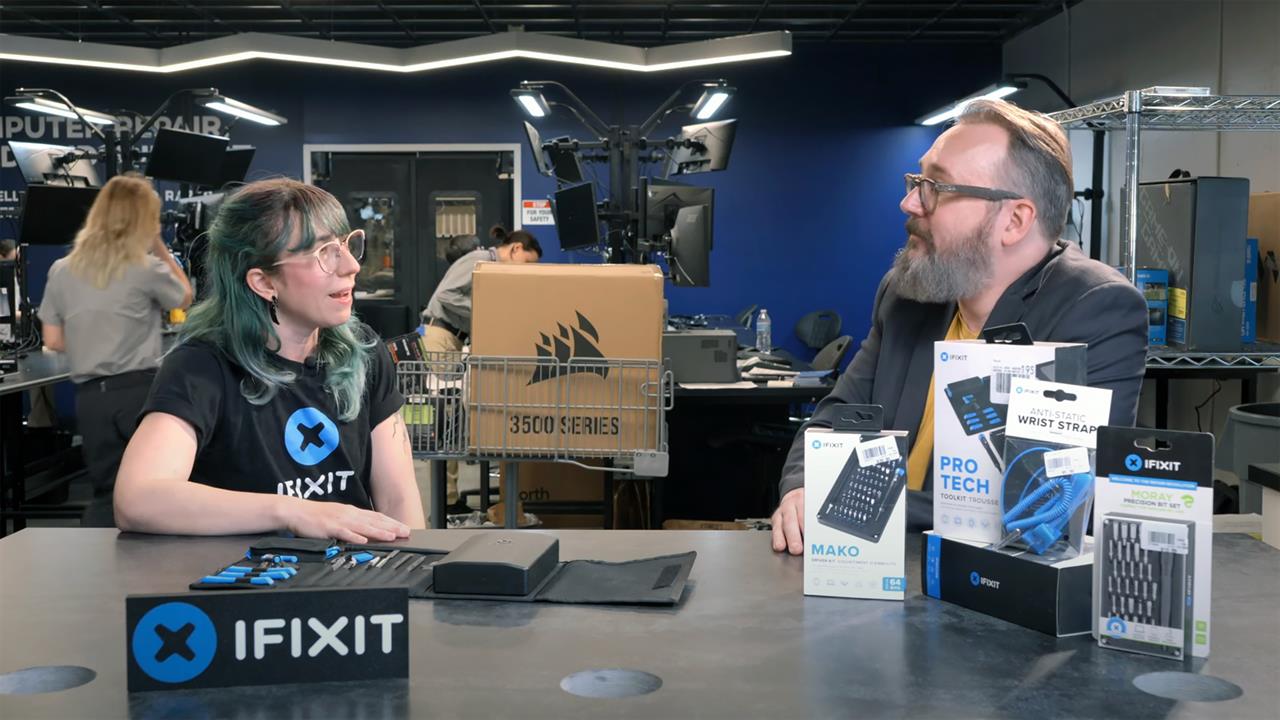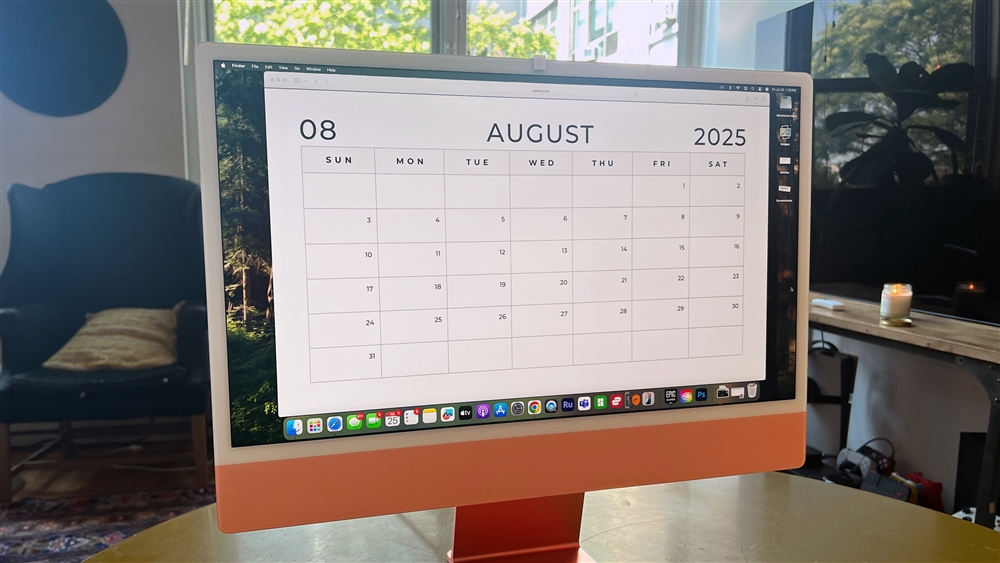Fix It Yourself: iFixit's Liz Chamberlain on Why Repairable Tech Matters
iFixit’s Director of Sustainability talks about the right-to-repair, and why access to parts and tools is important.News

During the grand opening of the new Silicon Valley Micro Center in Santa Clara, we got a chance to tour through the new store with the team from iFixIt, one of our favorite tech orgs.
If you aren't already familiar, iFixIt is an organization dedicated to providing online repair guides and tear-downs of consumer electronics, computers, and other gadgets, and there's even a whole series of iFixIt toolkits available at Micro Center.
I sat down with Elizabeth Chamberlain, Director of Sustainability at iFixit, at the Santa Clara store for a deep dive into the topics of repairability, sustainability, and the growing right-to-repair movement.
Our Q&A (lightly edited for clarity) is below, and you can also see this interview as part of our Micro Center/iFixIt video tour, where you'll see the iFixIt team pick out their parts and build a new PC for testing and video editing.
Dan Ackerman: I'm Dan Ackerman, editor-in-chief at Micro Center, and I'm here in Santa Clara at the new store with Liz Chamberlain, director of sustainability at iFixit, which is one of my favorite organizations, and one I have followed very closely throughout my many years as a technology journalist.
I'm excited to talk to you here about computer repair, technology repair, sustainability, right-to-repair -- all topics that I know we both have found very important over the years.
Elizabeth Chamberlain: Absolutely. Thanks for having me.
DA: Since the COVID era, I've seen more people building desktop PCs [and] getting more into DIY projects. Because they're not just buying sealed consumer electronic boxes off the shelf, they're building things in cases that often have glass windows and removable doors. Have you seen a similar push towards that, versus people just buying a sealed box and then when it doesn't work anymore, they just throw it out and buy a new one?
LC: Yes, absolutely. PCs, they're built for repair, right? And a lot of them have thumb screws for the cases, and components secured with thumb screws. You don't even need a toolkit for a lot of PC components. And we are starting, with the rise of right-to-repair legislation, to see products become more repairable than they have been in the past, at least in some cases.
Right-to-repair is the idea that you should be able to fix everything you own, and the manufacturers shouldn't be able to stop you by blocking your access to parts, tools, or documentation. And we have succeeded in passing some laws in the United States. We passed laws in five states so far, six actually now, as of last week [June 1] we passed [a law] in Washington state. And these laws mean that if you're in those states -- that's California where we are now, Minnesota, New York, Colorado, Oregon, and now Washington -- you have the same access to parts, tools, and documentation that manufacturers have, that their authorized shops have.
DA: How repairable are the current generation of, let's say, TVs and maybe game consoles? Because those often feel like black boxes for people.
But I will say, one of my proudest tech-dude moments of all time was maybe about 10 years ago [editor's note: it was actually 14 years...] , back when plasma TVs were just sort of at the very tail end, and I had one that went bad. I was able to get a Y-sustain board off eBay and open up the back and replace it, and I was thrilled. But today I don't know if I could do that with my OLED. It's not quite as easy to get into.
LC: Actually, we have an iFixit subreddit, and the most common question on the iFixit subreddit is, "Can I fix my TV?" It's, "I got mad, I threw my controller at it, can I fix it?" And the answer is yes, you can fix your TV.
If you threw your controller at it and you broke the panel, you might not be able to find another panel. That's really the issue. If it's anything else -- if it's a board, if it's the backlight -- then probably you can fix it and probably you can get the parts. Probably not for the panel.
DA: So if you have a laptop or a phone or a tablet or a game console that you want to either try to fix or upgrade, what's the first step people should take to start doing that research and start taking advantage of some of the resources that you have?
LC: You can go to iFixit.com and put in your product. We've got over 100,000 guides for how to fix everything from toasters to tractors, so give it a look and see if we've got a guide for it.
We have step-by-step guides with a lot of photos. We also have video guides on our YouTube channel. Our goal is really to make it easy, so that even if you've never done it before, it shouldn't scare you away.
If you're looking to repair or upgrade your tech and need help finding parts and tools, or want to talk to one of our Micro Center experts, you can start with our Help Center, see Tools and Supplies here, or sign up for Priority Care+, our premium support option -- all reasons why Micro Center is PC Mag’s #1 rated electronics retailer.
More from MC News
- How to Use an AI Agent
- Scenes from the Micro Center Santa Clara Grand Opening
- How We Built THE ULTIMATE DOOM PC
- Chain of Thought: AI's New Reasoning Revolution
- Windows 10 End of Support: What You Need to Know
- How to Build Your Own Custom Mechanical Keyboard
Micro Center Editor-in-Chief Dan Ackerman is a veteran tech reporter and has served as Editor-in-Chief of Gizmodo and Editorial Director at CNET. He's been testing and reviewing laptops and other consumer tech for almost 20 years and is the author of The Tetris Effect, a Cold War history of the world's most influential video game. Contact Dan at dackerman@microcenter.com.












